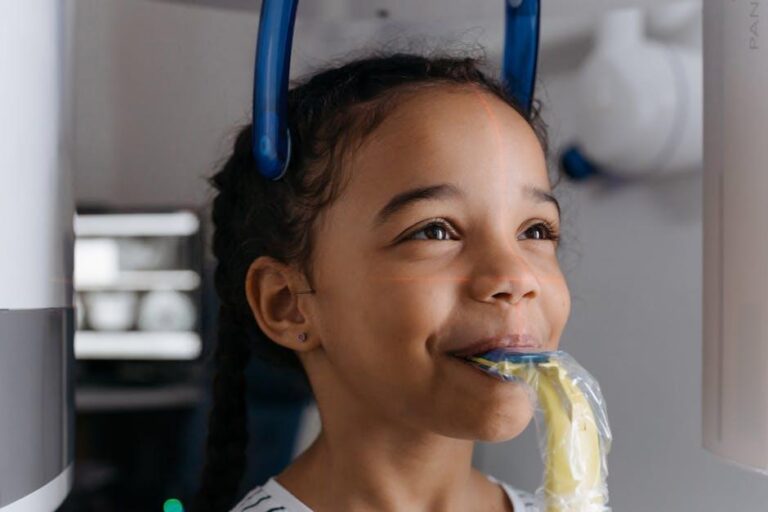1 in 3 Kids Has Dental Problems, Poll Finds – U.S. News & World Report
Recent findings from a national poll reveal a concerning statistic: 1 in 3 kids in the United States suffers from dental problems. This rising trend highlights a growing public health issue affecting children’s overall wellbeing. Parents, caregivers, and health professionals alike are increasingly mindful of the importance of pediatric dental care to ensure happier, healthier smiles.
Understanding the Scope: What the Poll Revealed
The poll, conducted across a diverse cross-section of U.S. households, uncovered that approximately 33% of children face some form of dental problem. These issues range from mild tooth decay to more severe dental diseases that can impact eating, speaking, and self-esteem. The data underscores how pervasive oral health challenges are and stresses the need to prioritize children’s dental care across the country.
Common Dental Problems Found in Children
- Tooth Decay (Cavities): The most frequent issue, caused by prolonged exposure to sugars and poor oral hygiene.
- Gum Disease: Early signs of gingivitis can occur in kids with inadequate brushing.
- Enamel Defects: Weakness or discoloration of tooth enamel often linked to diet and genetics.
- Malocclusion: Crooked or misaligned teeth that may need orthodontic intervention.
Why Are So Many Kids Facing Dental Problems?
Several factors contribute to this worrying statistic, including:
- Dietary Habits: Increased consumption of sugary snacks, sodas, and acidic foods.
- Lack of Oral Hygiene Awareness: Children may not be brushing and flossing effectively.
- Limited Access to Care: Economic or geographic barriers prevent regular dental check-ups.
- Inadequate Insurance Coverage: Many families lack dental insurance for their children.
- Parental Knowledge Gaps: Some parents are unaware of the importance of early dental intervention.
Health Implications of Childhood Dental Problems
Dental problems in children are not just about teeth – they can affect the overall quality of life and health:
- Pain and Discomfort: Untreated dental issues can cause severe pain, affecting concentration and play.
- Nutrition Problems: Difficulty eating may lead to poor nutrition and growth deficiencies.
- Speech Development: Dental health influences how children articulate words.
- Self-Esteem Issues: Visible dental problems can cause embarrassment and social anxiety.
Benefits of Early and Preventive Pediatric Dental Care
Investing in early dental care can transform children’s oral health outcomes:
- Prevention of Tooth Decay: Routine cleanings and fluoride treatments reduce risk.
- Early Diagnosis: Detecting problems before they worsen saves discomfort and costs.
- Healthy Habits Formation: Professional guidance encourages lifelong good oral hygiene.
- Better Overall Health: Good oral health is linked to reduced risk of chronic diseases.
Practical Tips for Preventing Dental Problems in Kids
Parents and caregivers can take proactive steps to promote healthy smiles:
- Brush Twice Daily: Use fluoride toothpaste and a soft-bristled toothbrush, helping children brush properly for two minutes.
- Floss Daily: Start flossing once teeth begin to touch each other to remove hidden plaque.
- Limit Sugary Foods and Drinks: Reduce frequency and quantity of sweets and fizzy beverages.
- Establish Regular Dental Visits: Schedule check-ups every six months starting by the child’s first birthday.
- Healthy Snacking: Encourage fruits, vegetables, and water over candy and juice.
- Lead by Example: Parents demonstrating good oral hygiene encourages children to mirror behaviors.
Case Study: Impact of Early Dental Care Program
In a community dental clinic in Denver, Colorado, a program aimed at early intervention reduced tooth decay rates by 45% among children aged 2–8 within two years. The program combined dental education, free fluoride varnish applications, and parental workshops. This real-world success echoes the necessity of accessible and comprehensive pediatric dental programs nationwide.
Overview of the Denver Early Intervention Program
| Program Elements | Outcome |
|---|---|
| Free Biannual Dental Screenings | Increased dental visits by 60% |
| Fluoride Varnish Application | Reduced cavities by 35% |
| Parental Education Workshops | Improved home oral hygiene practices |
| Nutrition Counseling | Healthier diet choices among kids |
First-Hand Experience: A Parent’s Story
“When my daughter was three, she got her first cavity. We felt overwhelmed until we found a pediatric dentist who explained the importance of regular care. Since then, our whole family has improved our dental habits. I wish I had known sooner how much small changes in our daily routine could prevent pain and costly treatments.” – Laura M., Boston, MA
Conclusion: Prioritizing Children’s Dental Health for a Brighter Future
The revelation that 1 in 3 kids has dental problems is a critical wake-up call for families and policymakers alike. By understanding the causes, embracing preventive care, and recognizing the profound impact oral health has on children’s lives, we can work together to reverse this trend. Early education, consistent dental visits, and parental involvement are key to ensuring kids grow up without dental disease holding them back. Let’s give every child the gift of a healthy, confident smile.


